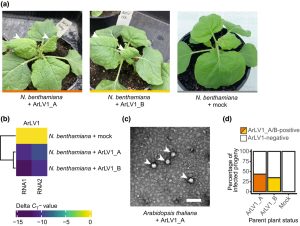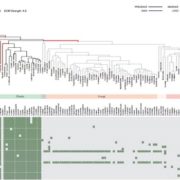Arabidopsis latent virus 1, a comovirus widely spread in Arabidopsis thaliana collections (New Phytol)
Arabidopsis thaliana has been established as a versatile and important model plant species, with abundant genetic and genomic resources. Through RNA sequencing, Verhoeven et al. identified an unexpected and previously unnoticed latent comovirus (the name “como” derives from cowpea mosaic virus) lurking in the genome of this well-studied plant, which was detected in both laboratory and wild strains. The authors named it Arabidopsis latent virus 1, as it is frequently causes no observable disease symptoms. Although many genomes contain evidence of long-gone viruses in the form of transposons, in this case the virus retains the ability to infect other plants and is seed transmissible to progeny. The authors showed both de novo infection of other Arabidopsis plants and Nicotiana benthamiana, the latter of which showed symptoms of leaf mottling. Although phenotypic consequences of the infection were minimal, mild drought resistance was detected in both species. The authors speculate that this virus is likely to be widespread and have caused “as yet unknown effects on plant performance in a substantial number of studies.” (Summary by Mary Williams @PlantTeaching) New Phytol. 10.1111/nph.18466










